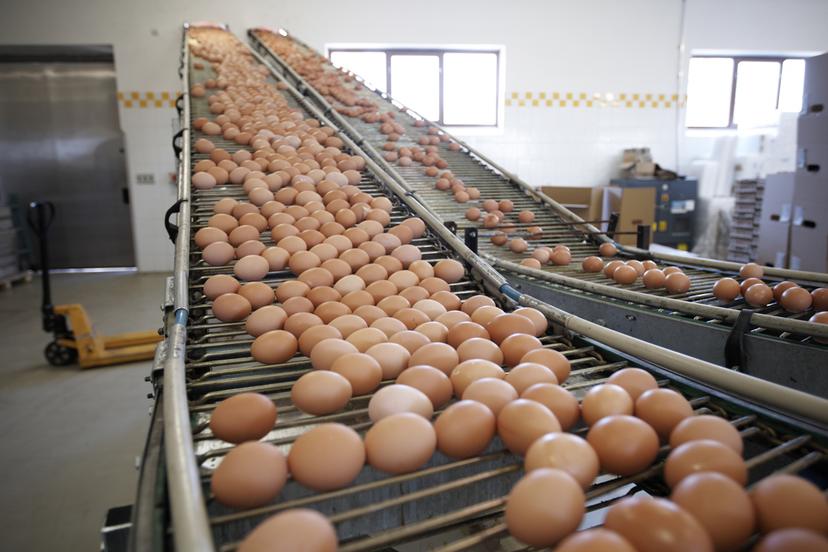Food and Beverage Production

Industry Outlook
The food beverage and industry has changed dramatically in a very short time. Frozen foods, for example, were a novelty in the early 1950s. Now, millions of homes in the United States use frozen foods in some form. Many products that formerly could only be processed by hand can now be completely processed by automated equipment, so it is possible for products to be harvested, processed, and packaged without ever being touched by human hands.
Some areas of the food and beverage industry have become virtually obsolete, while others have gained in importance. It is difficult to predict what this dynamic industry will be doing in another 30 years, but one thing is certain: People will always need to eat.
The growth of the food and beverage industry has not happened simply because people have to eat and drink or because of the population increase. This extra growth has resulted from many things—good management at all levels, teamwork among all segments of the food and beverage industry, heavy investment in research, new and improved products, modernization of plants, new equipment, automation, and a great deal of advertising and promotion.
The U.S. Department of Labor projects that employment in food processing occupations will grow by only 2 percent through 2028, while employment of some workers will increase slightly, such as butchers, 3 percent, and bakers, 6 percent. The sorting, cutting, and chopping tasks performed by these workers have proven difficult to automate, so employment among hand workers will rise along with the growing demand for food and beverage products. Automation is likely to decrease opportunities for machine operators and increase jobs for industrial machinery mechanics. Employment of technologists and scientists in the food and beverage industry is expected to be faster than average, at 7 percent, through 2028. Efforts to improve safety, particularly against the risk of bioterrorism, and find solutions for major issues such as feeding the increasing population, loss of arable land, deforestation, the availability and cost of usable water, pollution, and climate change will drive opportunities.
Also, despite industry efforts to self-regulate and provide consumers with healthier, safer food and beverage choices, problems remain:
- up to 40 percent of food is not eaten or is wasted, according to the U.S. Department of Agriculture
- each year, 48 million Americans are made ill by food they have eaten, according to the Centers for Disease Control and Prevention
- Americans eat more protein, but less vegetables and fruit, than recommended, according to a 2018 Foodinsight.org survey
- North America leads the world in the consumption of food additives, according to a 2017 IHS Markit report
As researchers discover new links between health and the types of foods and beverages people consume, the food and beverage industry will continue to respond with new foods, beverages, preparations, and processing techniques to meet the latest consumer demands and government regulations.
The 2020 coronavirus pandemic had a negative effect on the food and beverage industry. Consumer habits and demands changed abruptly. Demand for snacks, such as potato chips and pretzels, sweets, such as ice cream, alcoholic beverages increased. Consumers also stockpiled staple foods and meats, creating temporary shortages at grocery stores in some areas. At one point in 2020, 87 percent of consumers reported that they found products out of stock. Restaurants nationwide closed in response to restrictions on public gatherings, but many found creative ways to continue serving customers with takeout orders and outdoor dining. Grocery store and other food distribution workers were deemed essential workers, which allowed them to continue working. Some employees, though, chose to stay home or change their employment to avoid risk of being exposed to coronavirus.
Slow growth in the global food and beverages industry was predicted in 2020 due to the economic slowdown caused by the pandemic. According to a Research and Markets report, approximately 2.9 percent annual growth was projected in 2020 compared to 2019. In 2021, the introduction and acceleration of the COVID-19 vaccines and rebounding of the economy will help boost growth in the food and beverages industry, with 7 percent compound annual growth expected from 2021 through 2023.
Post pandemic, the food and beverage companies will increasingly adopt and rely on artificial intelligence to improve their operations and use their supply chains more efficiently. A market overview by Mordor Intelligence estimated that artificial intelligence in the food and beverage market was valued at about $3.07 billion in 2020; it's projected to grow to nearly $30 billion by 2026, at a compound annual growth rate of nearly 46 percent (from 2021 through 2026). The reasons for this tremendous growth are attributed to consumers' demands changing. Their preference for "fast, affordable, and easily accessible food options have led to a transformation in the food and beverage industry, with market leaders leveraging advanced technologies, such as artificial intelligence and machine learning, to scale operations and help companies stay relevant in a dynamic market environment."
